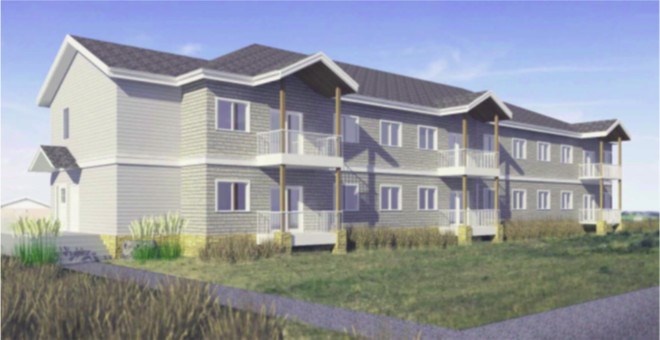Growing up in the remote, fly-in community of Kashechewan First Nation, Derek Stephen was all too familiar with the evacuation process.
Nearly every spring, as the Albany River swelled, Stephen and his fellow community members would have to leave their homes for dryer ground, usually for weeks at a time.
People are evacuated to Thunder Bay, Timmins, Sudbury, and beyond, but families are often broken up, causing worry and disruption.
“It was really disheartening to see families being displaced throughout Ontario, as far as Cornwall, to Thunder Bay and Fort Frances and those kind of areas, and there's 100 (people) here, 150 here, 300 here,” he said.
“Especially with Elders and parents of young families that are being displaced throughout Ontario, they were worried how family's doing.”
Stephen decided there must be a better way.
For the last two and a half years, the former Kashechewan chief has been working on the idea of a permanent ‘home away from home’ where families evacuated from remote Northern communities could remain together while resuming their everyday lives in a way that’s as close to normal as possible.
Through his company, CREE-Ative Structures, he’s launched the idea of a pair of permanent emergency housing centres, to be constructed first in Timmins and then Thunder Bay, each with 120 to 130 units that would include one to four bedrooms, kitchenettes, living rooms, laundry facilities and more.
Ideally, Stephen said, the centres would also incorporate classrooms, so that children could continue in their education; a common area, where community members could gather for traditional cultural ceremonies; and a medical unit, where a nurse practitioner or other medical professionals could address any health issues faced by residents.
When not in use, Stephen proposes the facilities be used by other organizations, such as the hospital, for family travelling to visit family members receiving care, or First Nations family services, who need temporary shelter for their wards.
“We’re trying to cover as much as we can through this facility where it provides assistance for the First Nations,” he said.
Under the current model, evacuated residents fleeing floods, forest fires or infrastructure failures take shelter at local hotels with the cost covered by the federal government.
But residents eat mostly restaurant food, children forgo classes, and local emergency rooms and walk-in clinics are sometimes overflowing.
Stephen believes it would be more economical and better for residents under his proposed model, pointing to the recent 3,800-acre forest fire in northwestern Ontario, which triggered the evacuation of 420 residents from Pikangikum First Nation in late May.
“(Residents are) all over Ontario today, and if this was in place already, then everybody would be together in one facility,” he said.
Spinoff opportunities could come in the form of training – community members could learn how to build the structures during the construction phase – in addition to transportation, housekeeping, cooking, and security services.
Partnering with Stephen is Nomodic, a design-build-install firm headquartered in Calgary, Alta., with extensive experience in constructing Indigenous housing. Ideas for the design include modular or prefabricated housing.
Nomodic would design and build the facilities, while CREE-Ative Structures would operate them as a turnkey operation.
Progress on the facilities is coming slowly, as Stephen is working on the concept in his spare time, when not working at his full-time job.
He’s spent the last few years consulting First Nations, municipalities and government agencies for support.
Feedback has been positive; he’s received letters of support from the City of Timmins, Mushkegowuk Council and the Chiefs of Ontario.
But he’s still looking for financial backing to get the project off the ground. He proposes a mix of private equity, loans and government grants.
If the concept takes off, Stephen plans to operate the facilities for the first five years.
But eventually, he wants to see the operation of the emergency centres in the hands of the First Nations that will use them.
“I think the need is there for it,” he said. “There will always be an evacuation of some sort within the communities, and having that in place is good for the communities, especially in the North, that are isolated. In drive-in communities, if you evacuate, you can drive anywhere.”
- Northern Ontario Business



